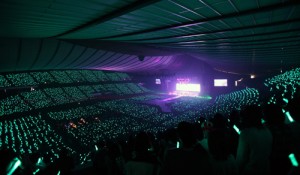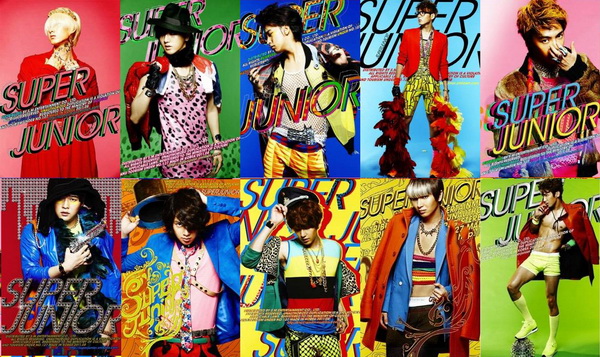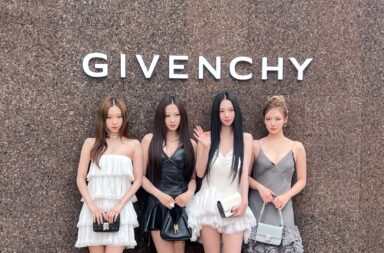 Hierarchies have existed in many forms throughout the ages, from the social classes of Ancient Rome, to the caste system of India, to the cut-throat world of high school. Even in celebrity culture there exists clear divides between the popular and the less popular. In fact, the rankings of Hollywood (and world) stars are mostly determined by the Ulmer Scale, a system which ranks actors based on their bank-ability, defined as the capacity of a star to raise interest (and funds) for a project with their name alone–in short, their ability to rake in a profit by just by mentioning their name.
Hierarchies have existed in many forms throughout the ages, from the social classes of Ancient Rome, to the caste system of India, to the cut-throat world of high school. Even in celebrity culture there exists clear divides between the popular and the less popular. In fact, the rankings of Hollywood (and world) stars are mostly determined by the Ulmer Scale, a system which ranks actors based on their bank-ability, defined as the capacity of a star to raise interest (and funds) for a project with their name alone–in short, their ability to rake in a profit by just by mentioning their name.
Of course, Hollywood isn’t the only entertainment hub in the world, and thoughts often turn to other industries with which we are also familiar–like the Korean Pop Music Industry. Now, K-pop does not have its own Ulmer scale, but one can tell who the big names in the industry are, like Big Bang, SNSD and the Wonder Girls. But how do we know this? What criteria do we use to determine who goes where on the K-pop popularity ranking lists? One of our lovely readers, Jennifer, put forth to us the same question; so I’ve taken up the task of getting down in virtual ink the cues us fans use to grade our idols’ fame.
Rather than lists, K-pop groups are often separated into “tiers,” with the top tier housing the most popular artists, and the popularity ranking decreasing with each subsequent tier (consisting of usually a mid- and bottom- tier). There are many factors influencing in which tier groups are placed, and after considerable thought, I have listed them here, in no specific order:
Generally, people aren’t always open to trying something new, but they might be willing to give a new product a shot if it is being produced by a brand that they know and recognise well. K-pop groups are no different (in fact, they are exactly the same), with groups from bigger companies being better set up for success than those coming from smaller companies (many of whom becoming “nugu” groups). While some groups are able to break free from their “nugu” status and climb to a higher ranking despite coming from a small or relatively unknown company, the general rule is that the bigger the company you debut under, the higher your starting and your chances of reaching a higher ranking. This is because bigger companies have more resources at their disposal to allow for better music and live-stage production, leading to better quality material being created for a group to release, as well as having the industry connections that can give you the edge over your competitors. After all, Exo-K would not have been able to snag a Calvin Klein endorsement before they had even officially debuted were it not for the hard work of Papa SM pulling strings behind the scenes. An extra advantage of debuting in a Big 3 company is that they already house some top tier acts, which really comes in handy for cross-promoting groups to cover a wider audience– 2NE1, for example, were officially introduced to the public as featured artists in label-mate Big Bang‘s CF song “Lollipop.”
2. The Music
As I touched on in point 1, being in a well-resourced company means the opportunity to produce better quality music, and that is exactly what new groups will need because, hey, this IS a music industry, after all. Sure, there are variety shows, drama roles, MC gigs and brand ambassadorships galore in idoldom, but none of those possibilities are open until you release good enough music, especially music that is well-liked by a enough listeners to become a hit, and thus make you more popular. A good example would be the Brown Eyed Girls, who were a small group until their smash hit “Abracadabra” propelled them to stardom. Beast is perhaps an even better example, with a well deserved rise in popularity coming from positive reception to their superb album Fact and Fiction. And who could forget SNSD with “Gee?” The phenomenal response for that song propelled SNSD to “National Girl Group” status. It should be noted here that this point applies more to promoted tracks than full albums. Because listeners are more exposed to the title track of a release, these singles are where a lot of the musical effort is concentrated.
Good music brings you fans; heck, even not-so-great music that suits people’s tastes can bring a group fans. But there are other ways to accumulate a fanbase, with CFs, variety show appearances, music video cameos and live performances, among others, acting as avenues for groups to attract the audience’s attention: some people may like Infinite for their in-sync dancing, some may prefer miss A because they recognise and like Suzy from her drama appearances and some fans may stan After School because they greatly admire Kahi. Most rookie groups even have their own reality shows as a way to directly reach their audience without having to wait for a variety show invitation or CF offer. However a group may accumulate their fanbase though, it is the music they produce that acts as a deciding factor for whether a newly acquired fan continues to support a group; while people’s tastes vary, it can be agreed that consistently bad music is not going to help fan retention rates.
While fame is the name of the game, some critical acclaim is also desirable to groups who wish to provide a more legitimate front for their popularity. One of the most straightforward ways to acheive such acclaim is through winning awards, and it all starts with the music show award. Taking out the prize on M!CountDown, Music Bank or (until recently) Inkigayo is a rite of passage for any K-pop group on its way to the top, and following one win up with more allows groups to be noticed by the industry and to display their staying power in the fast-paced K-pop scene. Though the actual validity of these awards is questioned, their perceived influence is undeniabe; winning these awards have recently propelled both Infinite and Sistar to higher rankings of popularity, while groups like MBLAQ and U-Kiss are still regarded as not having “made it” yet despite their devoted fanbases and number of years in the business.
After the music-show hurdle has been passed, the End-of-Year awards follow, the biggest and most prestigious of which are the Golden Disk Awards. However, all awards have some component such as online voting or volume of album sales which count towards the awarding criteria; components which can, and have been, heavily manipulated by the fans of the nominated groups to engineer a desired outcome for their camp (see point 3). Again, the validity of these awards is doubtful, but the fact remains that, in the present K-pop climate, winning a Disk Daesang (Best Album Award at the Golden Disk Awards) is the ultimate aim for a K-pop group.
Korea, like other countries, has its fair share of music charts, and getting #1 on any of these is seen as a significant milestone for K-pop groups; however, with such a saturated market of idol groups releasing new material almost constantly, it is difficult for any one group to reach and remain in the #1 spot on a chart for a prolonged period of time. Or so you would think. You know who the top tier acts in K-pop are when their newly released album shoots straight to the top on all of the major charts: a phenomenon known as the “all-kill.” All-kills are able to be achieved when a group’s past music has received such good reception that there is a lot of anticipation towards their new projects–or they’ve accumulated enough dedicated fans who go on a bulk-buying rampage to get their favourite group to the top of the charts (see point 3).
6. The Endorsements
It’s an open secret that idols generally don’t make a lot of money from their group activities and thus turn to other avenues to bolster their income. Endorsement deals are one of the more lucrative options available, with the added bonus of increased exposure to a potential new audience. But these companies aren’t going to pick just anyone to promote their products: like the idols, they want to expose their product to and attract a new audience and a greater number of consumers overall, so advertisers are more likely to go for more high profile groups who will come with a ready-made audience in the form of their fanbase (see point 3).
What happens once you’re famous in Korea? You get famous in other countries too, of course. While this happens partially out of necessity due to the relatively smaller size of the Korean market, causing acts to venture into other markets like Japan to increase their earnings, South Korea’s desire to seemingly conquer the world with Hallyu means that being noticed internationally and having an international fandom is quickly becoming a marker of prestige in K-pop, as generally the more famous groups in South Korea are the ones that are the most known and recognised overseas. At the beginning of 2012, a “netizen-made” chart ranking K-pop girl groups in terms of the level of their international popularity drew much attention: the list apparently did not take into account American activities–if it had, then the Wonder Girls may have been in a higher position. But actual rankings aside, this chart shows that international renown is a factor that fans are taking into consideration when ranking K-pop groups. But then again, there are height- and weight-based rankings of idol groups as well–maybe netizens just have a lot of time available to draw up random rankings… nah, I’m sure they have other things to do, too, just like the rest of us.
8. The Invites
The K-pop groups which get invited to participate in multi-act concerts are usually seen to be mid- to top-tier material. Like with endorsement deals, organisers are looking for groups that can pull in crowds courtesy of their devoted fans (… you know where to look). The end of year festivals, of Gayo Daejuns, held by the KBS, SBS and MBC each year may invite more rookies to perform, but will always make room for the most popular groups; for example, TVXQ and SNSD’s performances on some Daejuns were prerecorded as both groups were travelling to Japan to partake in the end-of-year festivities there. The preference for more popular groups is especially apparent for overseas concerts, where audience numbers aren’t going to be as big as they would be in South Korea due to the niche market to which K-pop caters. Top-tier groups can more confidently guarantee a higher turnout than a mid-tier or low-tier group, and sometimes their members may even be the MCs for the concert, as seen with Tiffany and Taeyeon of SNSD hosting the Korean Music Wave in Google Concert earlier this year, among other examples.
9. The Concert
 As a K-pop group, you can perform on as many music shows, multi-group concerts and family concerts (SM Town, YG Family, JYP Nation) as you can, but nothing compares to holding your own solo concert. The impact of fandoms has been evident throughout this list, and nowhere are they more important than when staging a solo concert–after all, there need to be enough fans willing to cough up the dough for admission to a show in a decent-sized venue to watch a single group perform, because, after all, concert tours aren’t cheap to execute and they would not be viable without a guaranteed return on investment in the form of ticket sales. Furthermore, groups need to have built up a discography sufficient enough to fill out a concert repertoire and also be engaging (see point 2). The Big 3 companies already have acts with their own solo concert tours, and the smaller companies have also started launching concert tours for their most promising and popular groups–Beast is currently on a world tour, Infinite held their first concert in early 2012 and Sistar will be holding their first solo concert this September.
As a K-pop group, you can perform on as many music shows, multi-group concerts and family concerts (SM Town, YG Family, JYP Nation) as you can, but nothing compares to holding your own solo concert. The impact of fandoms has been evident throughout this list, and nowhere are they more important than when staging a solo concert–after all, there need to be enough fans willing to cough up the dough for admission to a show in a decent-sized venue to watch a single group perform, because, after all, concert tours aren’t cheap to execute and they would not be viable without a guaranteed return on investment in the form of ticket sales. Furthermore, groups need to have built up a discography sufficient enough to fill out a concert repertoire and also be engaging (see point 2). The Big 3 companies already have acts with their own solo concert tours, and the smaller companies have also started launching concert tours for their most promising and popular groups–Beast is currently on a world tour, Infinite held their first concert in early 2012 and Sistar will be holding their first solo concert this September.
10. The Gaps
It is often accepted that groups need to regularly come back and release new material in order to stay in the public’s eyes and minds, and thus stay relevant; in fact, I’ve lost count of how many times B.A.P. has come back, and they only debuted in January–they and their company are taking no chances in establishing the group’s name in the K-pop industry. But more established and popular acts can afford to take a “break” from promoting music in South Korea. They usually spend this time promoting in Japan instead, or on tour, or involved in individual activities like acting and MCing. Then, after a considerable number of months (or even years) have passed, these groups announce a comeback and ride the wave of immense anticipation to all-kills (see point 5) and music show wins (see point 4), amongst other benefits. In fact, SHINee was invited to perform at the MBC Gayo Daejun despite not having released any new Korean material in 2011. Basically, a top tier group only would be able to sustain a high level of popularity while not promoting for extended periods of time. The timing is always important though: if making a comeback is left for too long, then there is a risk of a group descending into irrelevancy. Also, the high anticipation created by these gaps needs to be met with good quality music. Super Junior and SNSD’s comebacks are year-long hiatuses were soured by a less-than-stellar title tracks and albums.
As you can see from the above list, all the points relate to one another and no single factor is independent of all others, but in terms of the basic necessities for a group to become popular, these criteria all boil down to two things: having a large and dedicated fanbase and building a recognisable brand and name for yourself in the industry. Like the factors which increase popularity, however, there are also those that can lead to a decrease. These commonly include: a drop in the quality of music produced; becoming involved in scandals (though the damage seems repairable for all but the most severe of atrocities), and; age, with added military duty for the boy groups. But by avoiding these potential pitfalls (or having in place a military-service plan of some kind), K-pop groups have a better chance of making it to the top.
With regards to who is in which tier, it must be noted that the hierarchy in K-pop is in a constant state of change, befitting such a fast-paced industry. Though not always clear, groups can slip between streams in a matter of weeks or months, though once you reach the top there is more stability. Speaking of the top tier, groups that would be included there would meet most if not all the criteria listed above, like SNSD, the Wonder Girls, Big Bang, 2NE1, Super Junior, SHINee and Beast, for example. Groups on the rise would make up the mid-tier groups and be able to meet more than half of the criteria, while the bottom-tier K-pop acts would be achieving much less. the mid- and bottom-tier groups may even be further subdivided to provide a finer distinction: groups like Infinite and Sistar are seen to be in the upper echelons of the middle tier, for example, while rookie groups like B.A.P and Nu’est are inching closer and closer to the middle tier from the traditional rookie starting point of the bottom tier–if they haven’t already levelled up into the middle tier, that is.
So those are my thoughts on K-pop’s tiers; what are yours? Do you have any categories you think should be included? And who do you think the top-tier K-pop groups are?







